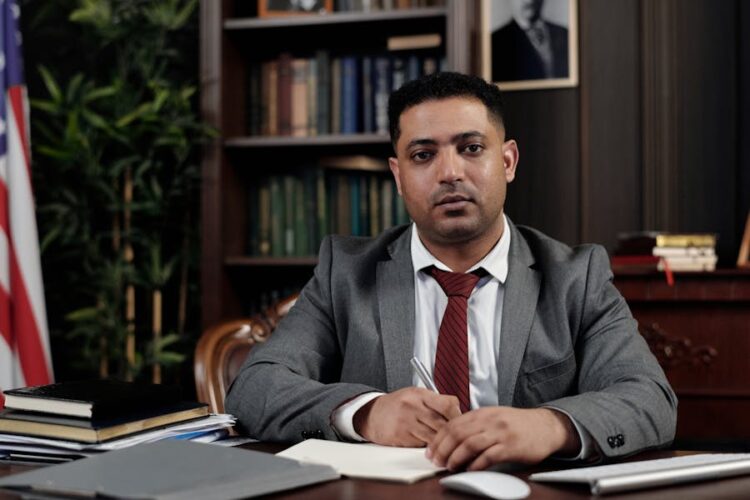Traffic collisions often happen in an instant, but the legal consequences can last for years. In the aftermath of an accident, one of the most critical legal issues is determining who is responsible for the accident. This single factor has a profound impact on how liability is assigned, how damages are awarded, and the options available for financial recovery.
If you’re involved in a collision in Marion County or surrounding areas, it’s essential to contact a car accident lawyer in Ocala as early as possible. Understanding how fault is determined under Florida law will help protect your rights and clarify your next steps. Even a small percentage of blame can drastically reduce your compensation—or eliminate it.
Understanding Florida’s Comparative Fault System
Florida operates under a modified comparative negligence rule. This means that in auto collision cases, more than one party can be found at fault, and the degree of responsibility affects the amount each party can recover.
Under Florida’s current laws, a person who is more than 50% responsible for the crash is not eligible to recover damages. If you’re less than 51% at fault, you may still recover compensation, but it will be reduced in proportion to your share of liability. For example, if a jury finds you 30% at fault for a $100,000 claim, your compensation would be reduced to $70,000.
This system makes fault allocation a high-stakes element of every case. Opposing insurers and attorneys will often try to shift as much blame as possible onto you to minimize their liability. That’s why securing legal guidance from an experienced litigator in Ocala is so essential.
The Role of Evidence in Proving Fault After a Crash
Legal outcomes depend on the strength of your evidence. To assign fault, investigators and attorneys look at the following:
- Police crash reports
- Vehicle damage analysis
- Surveillance or dashcam footage
- Roadway conditions
- Witness statements
- Mobile device usage records
- Traffic citation records
- Accident reconstruction expert opinions
Each of these elements provides insight into the incident’s mechanics. Small details—such as not using a turn signal or a distraction at the moment of impact—can significantly alter how responsibility is distributed. If critical information isn’t preserved early on, it may disappear or become less reliable, weakening your case.
When you contact a car accident lawyer in Ocala, they begin the process of securing evidence immediately, interviewing witnesses, requesting official reports, and working with experts to analyze collision dynamics.
Insurance Companies Use Fault to Influence Settlements
Insurance carriers aim to minimize payouts. One of the most common tactics adjusters use is to argue shared fault to justify lower settlements. Even when liability seems obvious, insurers often claim that the injured party failed to take evasive action or was partially distracted at the time of the incident.
These arguments can be persuasive without a proper legal rebuttal. A skilled auto lawyer knows how to challenge these narratives and present clear, fact-based arguments that accurately reflect the reality of the crash. Negotiation strategies must be grounded in a firm grasp of comparative fault principles.
Multiple Parties Mean Complicated Fault Distribution
Many collisions involve more than two vehicles or contributing factors beyond just driver error. Fault may need to be apportioned among multiple parties, including:
- Commercial vehicle operators
- Employers of at-fault drivers
- Vehicle or parts manufacturers (in cases of defective equipment)
- Municipal agencies responsible for road maintenance or signage
Each additional party introduces complexity and more aggressive defense strategies. Without experienced legal representation, accident victims may be overwhelmed by conflicting stories, legal filings, and procedural hurdles.
A local Ocala auto attorney can help identify all liable parties and ensure that no potential source of compensation is overlooked. This comprehensive approach is crucial for high-value claims or catastrophic injuries.
How Fault Impacts Medical Coverage and Out-of-Pocket Costs
While Florida is a no-fault insurance state, personal injury protection (PIP) coverage only pays up to a specific limit, often just $10,000. If medical costs exceed that amount, victims must seek additional recovery through bodily injury claims against the at-fault party.
Fault becomes central in this process. The more blame placed on the injured party, the harder it is to recover full medical expenses, future care costs, and pain-related damages. In some cases, misallocated fault can leave a victim with unpaid bills and limited options for recourse.
Careful documentation, early medical evaluations, and a strong legal strategy all play a role in ensuring that fault is assessed fairly and accurately.
Jury Perception and Fault Presentation at Trial
If a case proceeds to trial, how fault is presented to the jury becomes even more significant. Jurors are responsible for assigning percentages of blame to each party. How your legal team frames the incident—through visual evidence, witness credibility and expert interpretation—can significantly shape juror opinion.
Attorneys with courtroom experience know how to tailor their presentations to local juries. In a place like Ocala, where community values and local driving norms can influence perception, understanding the regional context is a significant advantage.
Taking Control of Your Case Through Fault Awareness
The allocation of fault affects every legal, financial, and strategic decision following a traffic collision. Understanding how liability is calculated under Florida law—and how to influence that determination—is essential to protecting your interests.
Whether your accident was a simple rear-end collision or a multi-car pileup involving commercial vehicles, you cannot afford to make assumptions about the fault. The sooner you engage an attorney, the sooner you can begin gathering evidence and constructing a legal strategy that minimizes your share of responsibility.
Taking a proactive role in the fault determination process will not only improve your chances of recovery, but it will also help ensure the outcome is grounded in truth and supported by facts.










